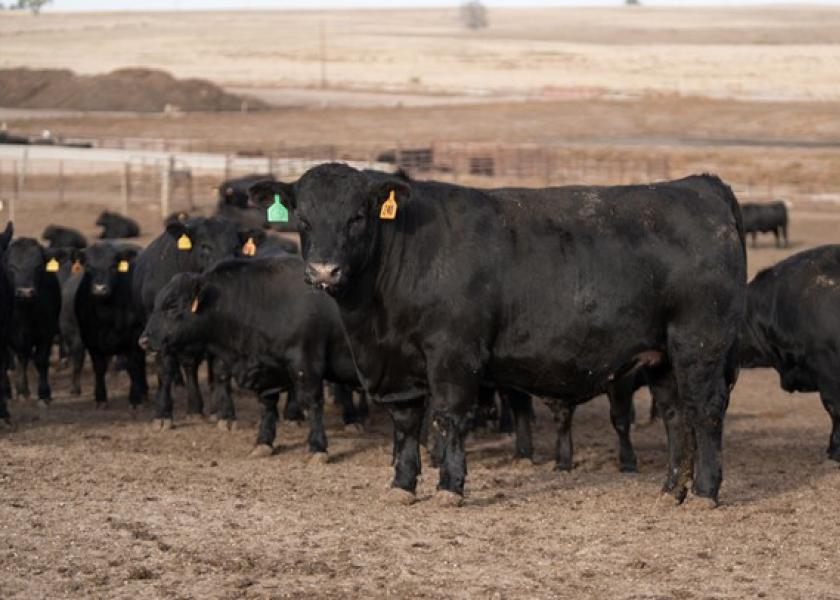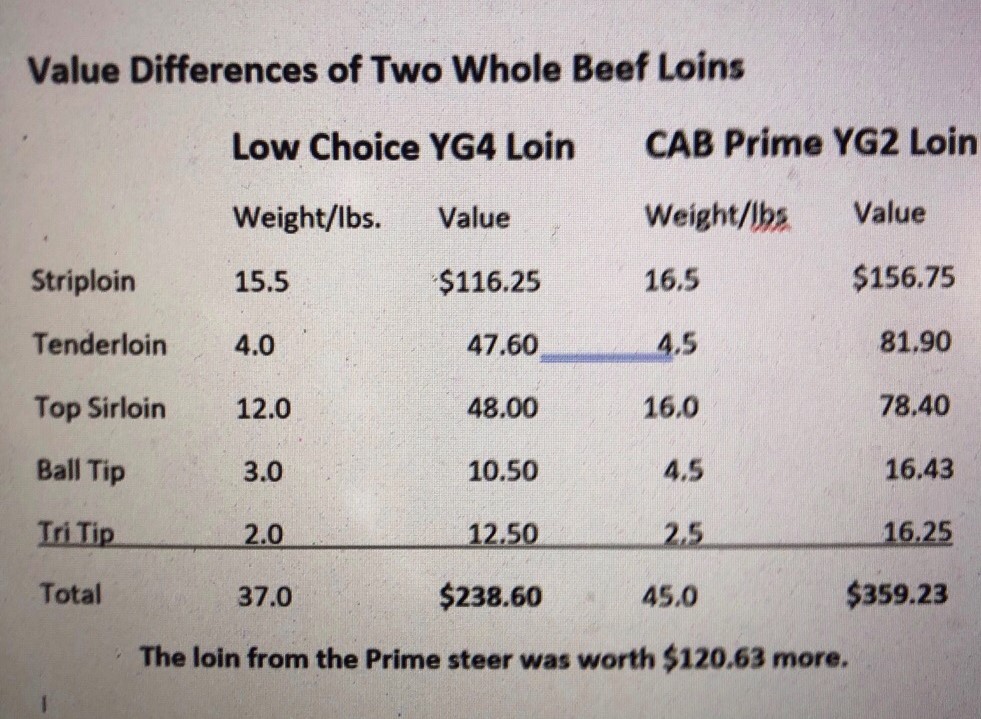The $ Power of Genetics

Sustainability has become the defining objective for businesses and every major corporation now has a chief sustainability offi cer and targeted company goals.
For many ranchers, however, sustainability has become the dreaded S-word with much of their anguish centered on one of the initiative’s key pillars – profitability. For instance, the average return on assets (ROA) for ranchers is -1.5%, according to data compiled by Ranch Management Consultants.
“Profit is to business the same as breathing is to life,” says John Locke, a Ranching for Profit (RFP) instructor, and CEO of the Locke Division of JD Hudgins Inc., a Texas Brahman seedstock program that began in 1908.
The ranching industry average ROA may be negative, but it jumps to +4.2% for members of the RFP Executive Link program and +9.7% for the top 20% of oper ations in Executive Link. What separates Executive Link ranchers from others, according to Locke, is that they spend more time working on their business and less time working in the business.
“A lot of us spend so much time making sure we’re doing things right that we never have time to consider whether or not we’re doing the right things,” Locke says.
Genetics should be one of those “right things” with an example found in the experience of Charles “Chuck” Backus as he pursued his dreams more than 40 years ago in the harsh Arizona desert. Once a National Aeronautics and Space Administration (NASA) scientist, Backus left for Arizona State Uni versity in the 1970s and bought a small ranch that came with a 22-section desert grazing allotment that was rated for 207 cows.
Backus taught engineering at ASU until retiring in 2004 when he turned his focus and his rocket-scientist approach to his ranch full-time. He began finishing his calves at an Oklahoma feedlot and collecting carcass data. He found his crossbred cattle reached about 50% Choice, but none made premium Choice. He promptly began an AI program so he could use higher-quality genetics.
“I needed to have cattle that took less feed and produced high-quality carcasses and were adjusted to my environment,” Backus says.
By 2012, after breeding up and including the first stacked generations of high-quality Angus genetics, Backus’ cattle graded 92% Choice or better with 12% Prime and 70% qualifying for Certified Angus Beef (CAB). By 2017 his percentage of Prime carcasses had increased to 52%, with 94% grad ing Prime or CAB.
Proclivity for Prime
During the two years since the pandemic began, stakeholders throughout the beef industry have marveled at the resiliency of beef demand even as inflation hit the meat case hard. A common complaint among ranchers, however, is the fact higher retail prices aren’t reflected in ranch profitability.
It doesn’t have to be that way. A demonstration at this year’s Gar diner Angus Ranch (GAR) annual April production sale showed attendees the power – and profit – available through superior genetics.
The Gardiner family hosts three annual sales at the ranch near Ashland, Kan., to market nearly 800 Angus bulls and 700 commercial and registered Angus females. The annual April production sale rou tinely sees more than 500 bidders both online and in-person, a tes tament to a rock-solid foundation of commercial cow-calf customers from more than 30 states.
The loyalty of commercial customers has been decades in the making, and ranch CEO Mark Gardiner says the turning point came more than 40 years ago when his father, Henry, decided the path to more rapid genetic improvement was to use artificial insemination on every female.
Today the genetic toolbox has expanded to include every proven form of predictability, including EPDs, DNA testing, Beef Value ($B) and a Retained Ownership Index (ROI) compiled by Method Genetics using GAR genetics and GAR customer herds.

“The Retained Ownership Index (ROI) is the best tool we can offer our customers for evaluating bulls and females,” Gardiner says. “Unlike other indexes, ROI combines maternal, growth and carcass quality endpoints into one comprehensive index.”
Demonstrating the power and value of superior genetics for GAR custom ers the evening prior to April’s sale, two Certified Angus Beef meat scientists – husband and wife team Dr. Daniel and Diana Clark – fabricated two whole loins from different steers into retail cuts while the audience watched. One loin came from a GAR home raised steer that graded Prime, Yield Grade 2. The second loin graded low Choice, YG 4 from the commodity run at National Beef on the same day.
The loins from the two steers were of equal weight, but the Prime loin had a 10% greater yield and a retail value difference of more than $120 over the low Choice loin.
The value difference for the Prime YG2 steer is found in the U.S. Premium Beef cash settlement worksheet. The calculated breakeven for the Gardiner-raised steer was $2,013.40. The average western Kansas price for steers the last week of January was $136.67. Assuming both the steers in this demonstration had a live weight of 1,492, the steers would have sold on the cash market at $2,039.12/ head, or a profit of $25.72.
 On the USPB Grid, the Choice YG4 commodity steer would have earned a Choice Premium of $89.08, but also a YG/weight discount of -$96.30. That left a grid premium of $23.61 over the cash price. The GAR steer began with a grid base price of $2,044.22 and earned the Choice premium of $89.08. It also earned the Prime carcass premium of $357.18 producing a grand total of $2,490.98. That’s a $446.26 premium for Prime and a total profit for the steer of $471.98.
On the USPB Grid, the Choice YG4 commodity steer would have earned a Choice Premium of $89.08, but also a YG/weight discount of -$96.30. That left a grid premium of $23.61 over the cash price. The GAR steer began with a grid base price of $2,044.22 and earned the Choice premium of $89.08. It also earned the Prime carcass premium of $357.18 producing a grand total of $2,490.98. That’s a $446.26 premium for Prime and a total profit for the steer of $471.98.
The Gardiners began collecting carcass data in 1970. Since then 52% or 14,127 carcass records out of 27,455 in the current Angus database were submitted by GAR, and the ranch has gathered carcass data on 112 of the 663 sires in the Angus database with at least one carcass record.
While the $440-plus premium on a Prime steer last January was above the norm, Gardiner notes that the ranch’s carcass data over the past five years shows an average $127 per head premium. With 13,885 Gardiner and GAR customer cattle tracked, 98.69% graded Choice or better, with 30.6% Prime.
“Carcass merit traits are highly heritable,” Gardiner says. “Cattle designed with these high accuracy progeny-proven bulls add value for our customers and our family. That’s how we pay the bills. You can do this, too.”







